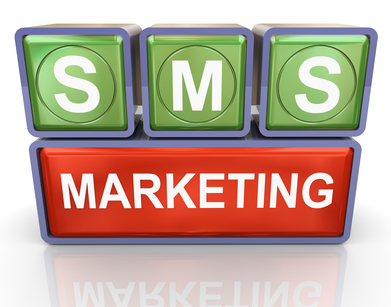
As with any marketing medium, SMS text marketing has its own unique advantages and properties. Text messages have the dual-advantage of an instantaneous connection and a high-open rate, but the platform requires messages to be short and without any frills. The fact that there’s not much to them shouldn’t deter you from centering marketing strategies around SMS, however. There’s a great deal of power in a simple text message. Below you’ll find six marketing strategies for text messages, and how to deploy them.
1) Brand engagement.
Identify your brand in the text message. Many brands make the mistake of failing to identify their business – and consumers immediately delete these messages. Let them know who is contacting them and encourage consumers to interact with your brand. Invite them to respond back to your text message with witty, clever content. Use short codes to foster this interaction. SMS brings a feeling of direct and personal contact between users and brands.2) Keep the story short.
Consumers appreciate a well-written story, and text messages have to be kept short (less than 160 characters). So don’t waste your time with overused words like “revolutionary” or “amazing” – you simply don’t have enough real estate. Instead, keep your messages tight and get to the point. Use ideas like “Sale this weekend only, we’ve got your size!” or “Top this: we’ll match any advertised price.”3) Cross-promote.
Make sure that all of your marketing campaigns tie-in to your SMS campaigns. Take advantage of the fact that most adults have a cell phone and open their text messages within minutes of receipt. In email ads, try offering a signup for mobile coupons. Embed short codes into print and radio advertisements to increase customer engagement. Allow in-store consumers to opt-in to loyalty programs using their mobile phones. There are hundreds of ways to bring SMS into your other campaigns, so be sure to cross-promote.4) Sweepstakes and contests.
Consumers love a good sweepstakes. Use SMS to facilitate customers’ entry into contests – it’s faster and more effective than any other method. Make sure to make the SMS form easy to fill out to maximize your lead capture.5) Time and place.
Timely messages are key, but also take advantage of location as well. Rather than promoting existing campaigns through SMS, offer first time coupons and deals through text messages. Special limited-time offers with deadlines work very well because they give customers a sense of urgency and stir them into action. Also, you can provide in-store recommendations to customers. For example, in an auto parts store, customers could text the make and model of their car to a short code displayed in a given aisle. The short code could respond with recommended products, thereby helping the customer right where they are, without any other apps or having to talk to an employee.6) Know your audience.
Use data lists to segment your target audience, and to enhance your timing. Your outgoing message should be useful to the customer and it should have a clear, strong call to action (like a link in the SMS that leads back to a fill-form on your website). Customers want discounts and free offers, so make sure to reward them for opting in to your SMS list. Most of all, allow your customers to opt-out of notifications if they wish – this will save you a great deal of trouble in the reviews and complaints department down the line.
All in all, be thoughtful and vigilant around the type and frequency of text messages to customers. Think of what will work to bring in new customers and keep your current ones engaged with the brand. The most important aspect of a good SMS marketing campaign is succinct, strong content. Once you’ve incorporated some of these marketing ideas into your campaign, track results and optimize as you go.